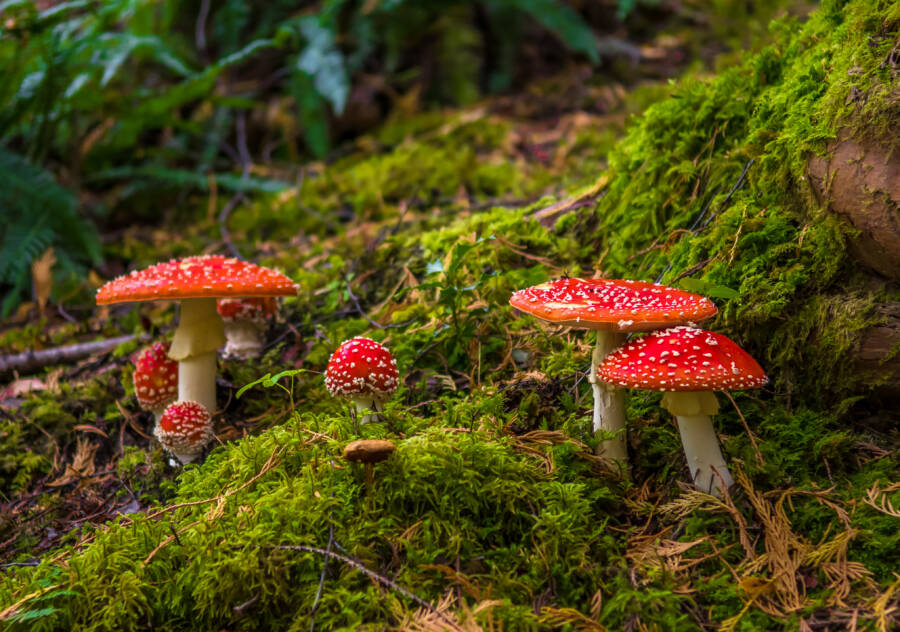A New Study Revealed That Mushrooms Communicate With Each Other Using A 50-Word Vocabulary

Getty ImagesMushrooms that spring up from the same central mycelium are able to transmit electrical pulses to one another.
Mushrooms are still among the most mysterious and strange organisms on the planet — and for most of history, they were largely misunderstood. In fact, the term mycology wasn’t coined until the 1830s, and even then the true nature of fungi didn’t start to come to light until the advent of modern biochemistry.
As such, scientists are regularly learning new information about these fascinating organisms. A paper published this year in the Royal Society Open Science journal identified a startling new discovery: Mushrooms within the same mycelium network talk — and talk often.
“Assuming that spikes of electrical activity are used by fungi to communicate, we demonstrate that distributions of fungal word lengths match that of human languages,” said the study’s lead author, Andrew Adamatzky. “We found that the size of fungal vocabulary can be up to 50 words, however, the core vocabulary of most frequently used words does not exceed 15 to 20 words.”
Adamatzky and his team used electrodes to measure the electrical spikes emitted by mushrooms, likening these spikes to human speech, at least for the sake of comparison.
“We do not know if there is a direct relationship between spiking patterns in fungi and human speech,” he said. “On the other hand, there are many similarities in information processing in living substrates of different classes, families, and species. I was just curious to compare.”
We probably won’t ever see “Fungus” as an option on Google Translate, but this new research did at least offer some more insight into the magical world of mushrooms.





